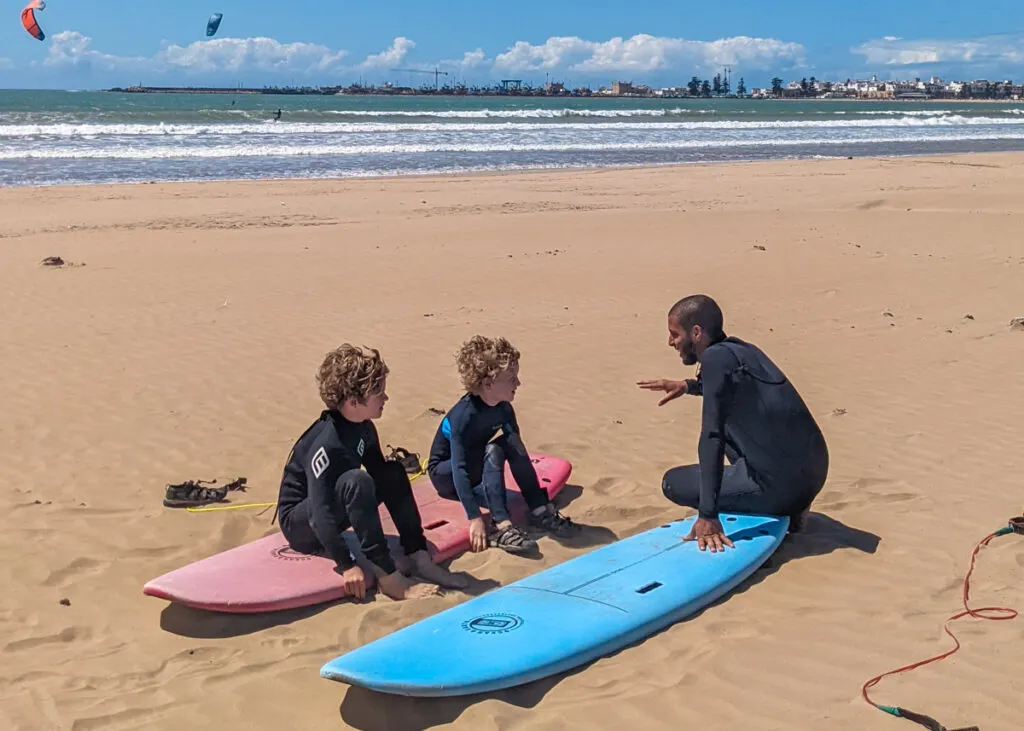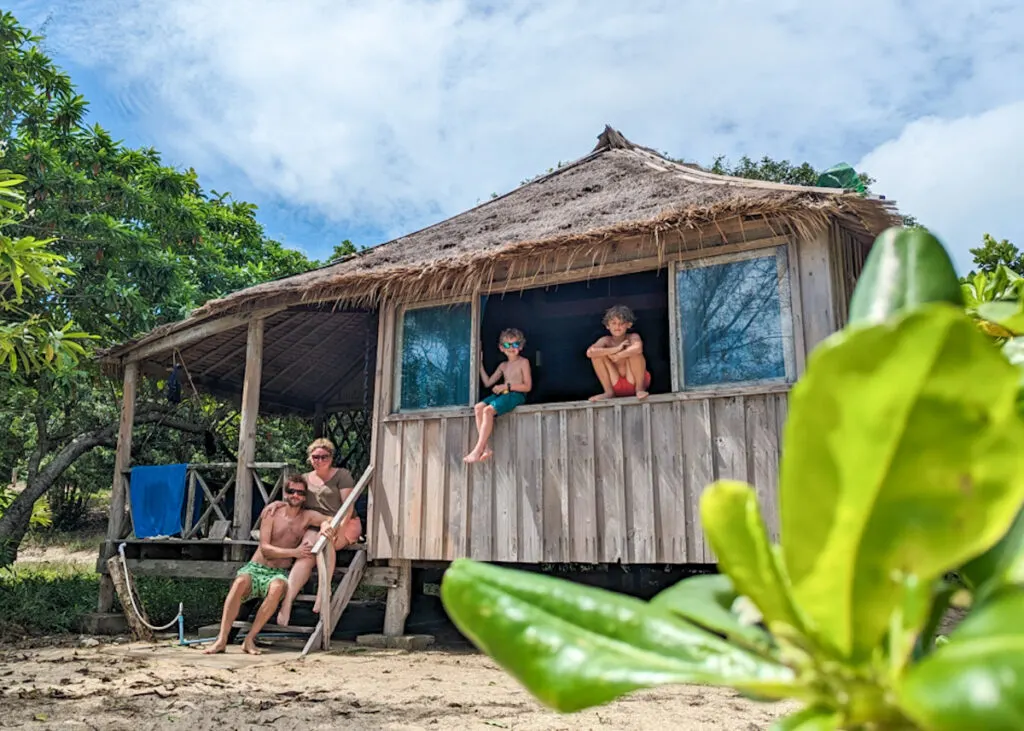Since becoming parents, we’ve been fortunate to backpack with our kids to so many beautiful places across the globe, from Sri Lanka to Morocco, Singapore to Cambodia. The most common questions we’re asked aren’t necessarily about the destinations however, but rather the logistics; how do you make it work, backpacking with kids?
There is a perception that backpacking with kids is either difficult or impossible, and it’s only a select few families who can make it work.
We’re huge advocates of the benefits of family travel for the opportunities it gives you to grow and bond, the worldschooling experiences, plus the fun and the memories you’ll create along the way. But most of all, it’s something we believe all families are easily capable of.
So here we’ve collected together a few top tips to make it work, so you can set out on your own family backpacking adventure with confidence.
Disclaimer: This post contains affiliate links. If you click to purchase, it is at no additional cost to you, and I receive a small commission.
What is backpacking?
Backpacking conjures up different images for different people. Once upon a time, backpacking was more of a lifestyle choice, associated with hippies hitchhiking across Asia, guitar in one hand, spliff in the other. Then it progressed to a right of passage for gap-year kids to find themselves before plunging into the real world.
As the years have passed by, the notion of backpacking only being for certain types of society has changed as more and more families and ‘older’ travellers strap on a bag and take to the open road.
As a couple, we travelled extensively around the world with our backpacks pre-kids, and always knew we wanted to keep going when our children arrived. We always assumed that the mechanics of the trip would change when we had two fellow travellers but, in hindsight, that’s not being the case.
Of course, travel is slightly different now than when we were in our 20s, but the same could be said for most things in our lives. Kids travel the same as adults, the routine and plans just need tweaking slightly to take them into account. There might be a few less late nights in a backpacker bar but, as we get older, that suits us adults just fine!
We’ve taken our kids on several backpacking trips since they arrived into the world and we’re keen advocates of children learning the joys of travel whilst they are young and the worldschooling philosophy. So we thought it was about time we share our tips on how to make backpacking with kids work for the whole family.
Tips for backpacking with kids
We’re not trying to say backpacking with kids is easy. Indeed there are a few things you need to keep in mind to keep you all sane. But then again, no aspect of parenting is always easy, so try not to forget that the difficulties you face on the road are probably more similar to what you face at home than you realise.
These tips will hopefully help though. There are things you can get right before you leave, and things to keep an eye on whilst you’re travelling, that’ll make the whole trip that much better.
Get it right, and perhaps you’ll be joining your kids on their own family adventures in years to come.
1. Get the kids carrying their own backpacks ASAP
Packing light for a backpacking trip is an art in itself, but nothing makes it harder than having to carry other people’s gear as well. It makes sense for everyone that kids start carrying their own backpacks as soon as possible. It’s surprising how quickly they get used to the weight, and it frees up your bag for more of your own stuff.
Up until the age of four, we carried the boys stuff for them, mainly because they weren’t yet able, but also because they didn’t have that many clothes (although things like back-carriers and nappies can add to the bulk).
From the age of four, we bought them tiny backpacks, maybe only about ten litres or so; enough to give them a feel for carrying a backpack but small enough not to overload them. Sometimes it only had a teddy inside, or perhaps their book. The point wasn’t really to help out with the weight, more so they were used to having straps over their shoulders. Plus it started teaching them the responsibility of carrying their own stuff.
As soon as they reached the age of six or seven, we bought them a small backpack each for them to carry most of their stuff. Again, we were careful to not overload them, but they soon got used to the weight and also the responsibility of carrying their own stuff, packing their gear and (usually) not losing anything.
Check out our guide to the best travel backpacks for kids
- For children aged 8 and up
- The backpack grows with your child thanks to VariQuick back length adjustment
- Optimal load transfer thanks to the compact hip fins
- Hydration system attachment (compatible with deuter Streamer 3.0 – not included)
- Variable fastening options thanks to material straps in a wide range of positions
- Adjustable AirSpeed trampoline suspended mesh backsystem
- Compatible with Hydraulics Reservoirs
- Integrated & detachable raincover
- Fixed lid with dual zippered pockets
- Side compression straps
2. Pack light and limit the teddies
Packing light is key for any age, but it really is important for young kids. It goes without saying you don’t want to strain their little bodies with too much weight but perhaps more importantly, you don’t want to turn their adventure into a chore and nothing will do that more quickly than a heavy backpack.
If you or they are complaining of too much weight, you’ve packed too much stuff. Our guide to packing light with kids will give you some ideas.
The other easy way to reduce weight is to leave one of them behind. Yes, we know it’s not easy to decide who to discard as they each have their own personality and they’re a valued member of the family but you have to be ruthless sometimes. Don’t worry, we don’t mean one of the kids, instead you need to leave all but one of their favourite teddies at home. They really do take up a lot of space and you’re setting yourselves up for meltdown when a teddy inevitably gets lost. Choose one and keep them in sight at all times!
Similarly, parents should ensure that their own backpacks aren’t overloaded in case you need to carry some of the contents of your kid’s bag. Plus, hopping on and off busses and trains is just easier when you’re not overladen with heavy bags.
3. Get the kids packing their own bags
It’s a vital life lesson to learn how to pack, unpack and repack your own bags, especially when you’re backpacking and having to unpack several times a week.
The key here is to remember it takes time to get it right and backpacks aren’t always the easiest things to pack, especially when you’re trying to checkout on time, or race to catch an early morning train.
Try to pack the night before and only leave things like pyjamas and toothbrushes to pack in the morning. Give the kids plenty of time to learn where to put stuff, keep the occasionally-worn stuff at the bottom and MAKE SURE they’ve packed that teddy.


This takes a lot of patience from parents, but in time, it will pay off. You don’t want to be that parent still packing multiple bags when you’re hopping between destinations every few days.
4. Keep the toys at home
We’ve talked about teddies already but the same applies for favourites toys from home. Unless it’s a tiny, robust toy, it’s not going to last the distance, or be a sensible use of space. Part of the fun of travel is trying new things and they’ll be able to pick up toys whilst travelling from local markets and malls.
Better still, once they’ve grown tired of the toy, see if there are local children or charities who might want it; the kids are more likely to do this with a new toy rather than their favourite from home. The prices will be low in most countries, so they’ll get more for their pocket money.
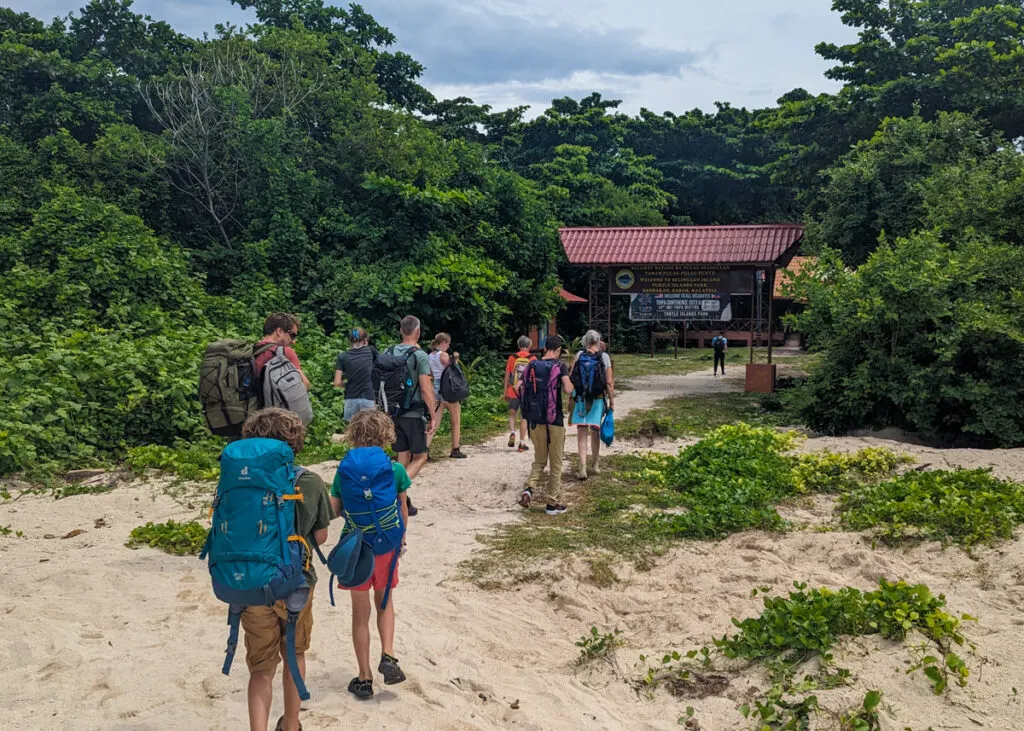
5. Slow the schedule down
It might increasingly be a cliché, but slow travel really is the way to go, especially with kids. When you were young(er), it didn’t seem difficult at all to arrive in one city at 6pm, go out for the evening, then jump on the 7am bus for the next all-day trip. Whole days could be spent ticking off a city without taking a nap break, so it seemed easier to justify catching the bus out of town the very next day.
Travel with kids is better when you slow it down. Travel days can be tiring for kids, not just the physical side of early starts and late arrivals, but also the mental side of getting used to a new hotel room, a new cuisine, and new climate. Give them the chance to get used to a place for a week before moving on and don’t be afraid to change your plans if you find somewhere you all love.
There’s no hard and fast rule, but we find anything less than three nights in one place gets difficult if you try and string lots of them together. Of course, there are some parts of your trip where you’ll need to stop off in a random town for one night to make an onward connection but these should ideally be the exception.
It’s also great to stop for a longer period (one week plus) every few weeks. We spent eight days in Siem Reap with kids during our 10 week trip to Southeast Asia, partly because of Angkor Wat, but mainly because we sensed the kids needed a break and it was the sort of place we could relax in but still keep them entertained. The plan had originally been to only stay there for three nights and then travel overland to Laos, but we soon realised the trip would be better if we took a breather for a few days.
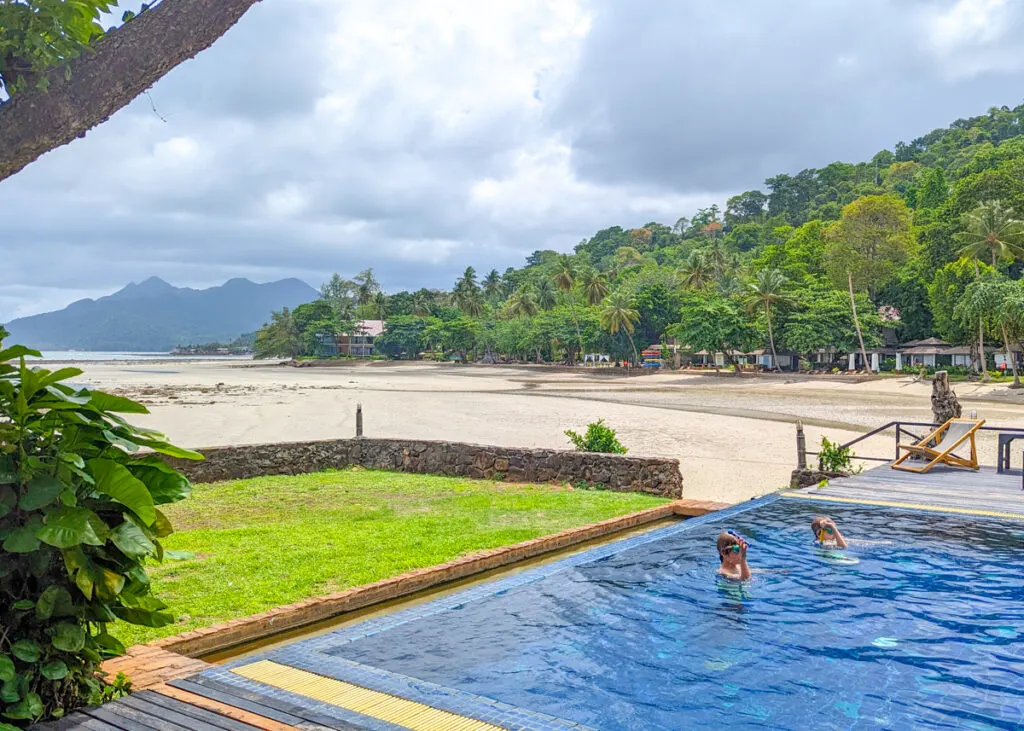
6. Mix up activities and destination styles
The beauty of travel is the variety you find, so try to alternate the sorts of places you visit.
Kids will be wowed by temples for the first day or so, but trying to do fourteen days in a row isn’t going to work. In the same way, kids will enjoy a theme-park or waterslides for several days, but you wouldn’t want to do that day in, day out for weeks. A trip to the cinema can be a treat but works best when it’s only every now and then.
Do your best to plan an itinerary which moves between different activities and places, never getting stuck in a rut of being ‘templed-out’ or ‘beached-out’. If you’ve spent three weeks doing overland travel in a more remote country, try to head to a modern city-centre apartment straight afterwards so they can lounge in a pool and eat some Western food.
7. Get the kids involved in planning
Being engaged with the trip from the beginning is a great way to involve the kids and get them excited about the upcoming adventure. And whilst their opinions can’t always be taken into account (there are only so many ice-cream factories you can legally visit on one trip), it’s important to include them in the planning, especially as they get slightly older.
They might reveal a preference for visiting a certain landmark they’ve read about at school, or visiting the site of a famous battle they were taught about in history class. Perhaps there’s a theme-park which is a must see, or a skill they’d like to learn during the trip, like surfing.
We all feel more invested in something if we have some input into its planning and the same is true of a backpacking trip. Buy as many maps and books as you can afford and stick them up in their bedroom. A pack of sticky dots to affix to the map is a great way to plan the route, even if you don’t end up doing everything on the list.
8. Always have snacks handy
You’ll know the symptoms of ‘hangry-ness’ from being at home but the condition can be much more severe overseas, especially when combined with an early sightseeing departure or broken down bus. It’s easy to buy snacks on the road but make sure you have a handy supply on you in your day-bag.
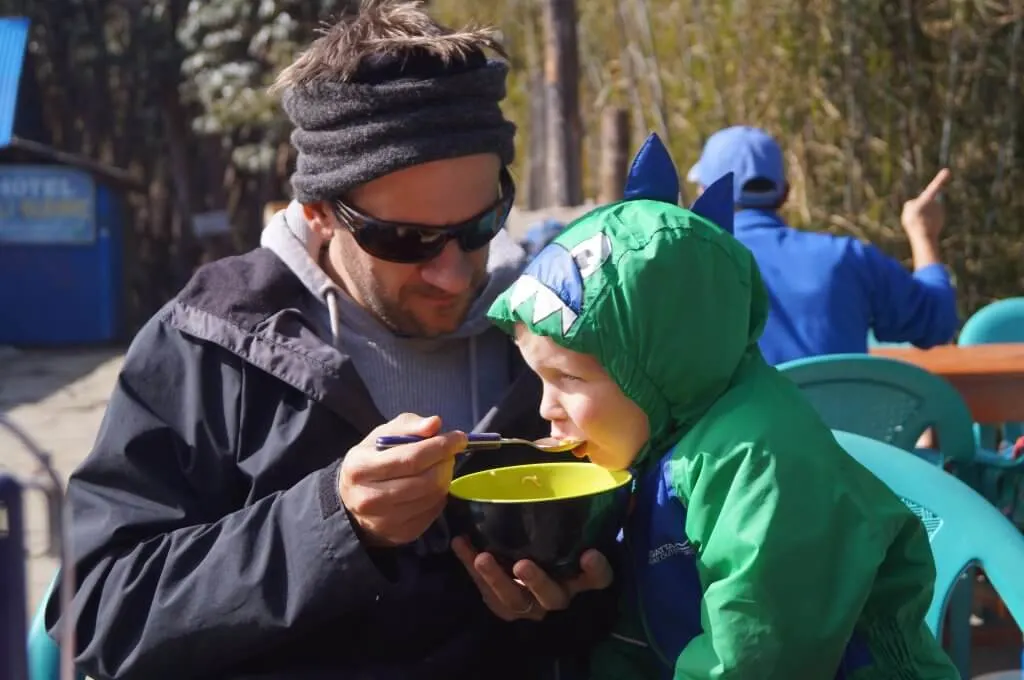
Try to get your kids into local street food if possible, as long as the food is cooked fresh and the stall looks hygienic, you’ll be fine. It’s a fun and inexpensive way to fight off hunger tantrums, and is nearly always healthier than sweets. Fruit which you can peel (e.g. bananas) are a great thing to pick up as well.
9. Keep a small medical kit on you at all times
One of the more essential items on your packing list and not one you want to skimp on, make sure you have a well-stocked, in-date medical kit which covers you for most eventualities. We found that a full kit doesn’t need to be too heavy and you can pick up replacements for the more generic items like plasters and paracetamol quite easily in most countries. Although bring Calpol sachets from home.
The medical kit is rarely needed in the hotel room, but more likely when you’re out and about. So we suggest keeping a mini-medical kit (with some antiseptic cream, plasters, etc) in your day bag, at the ready.
- This product is quantity restricted and a maximum of 2 products containing paracetamol, aspirin or…
- Tough on pain but gentle on little tummies
- Gets to work on fever in 15 minutes
- Pain and fever relief
- Contains paracetamol
10. Don’t wait to start backpacking with kids
The most important piece of advice, comes at the end. Don’t put off backpacking with kids until they reach some magical ‘perfect’ age, because that age doesn’t exist. The best time is now.
That’s not to say it’s always easy; logistics and life might mean you need to delay a few months but remember there will never be a single moment when it’s 100% the right time, because life isn’t like that. The memories you make together will last a lifetime and there is something about backpacking as a family, where challenges are sometimes thrown at you but you work them out together, where something interesting is always around the corner, which makes it a perfect way to travel as a family.
Seeing the world through your kids’ eyes is an amazing experience and, in our opinion, giving them the chance to travel and see the world as they grow up, is perhaps the best gift of all.
You may also want to read:
Top 10 tips for PACKING LIGHT with kids
Best travel backpacks for kids
How we afford to travel with kids






